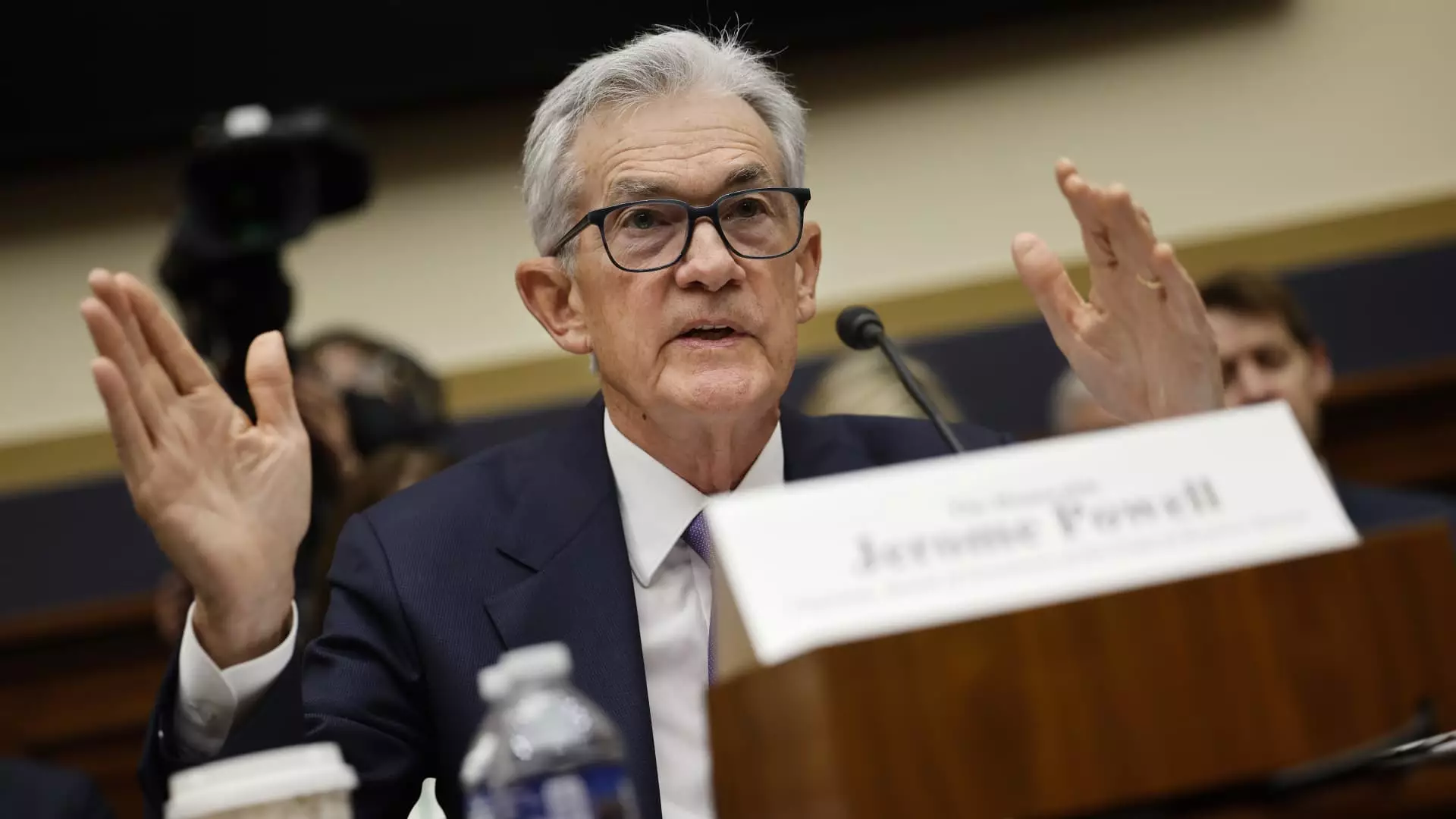As the United States faces a complex economic landscape, Federal Reserve Chair Jerome Powell’s recent testimonies before Congress offer insights into the central bank’s strategy for managing monetary policies amid prevailing inflationary pressures. Despite the insistence on a steady approach to interest rates, Powell’s comments reveal a careful balancing act between stimulating growth and controlling inflation. This article examines the critical elements of Powell’s recent remarks and their implications for both the economy and policymakers.
Powell characterized the U.S. economy as “strong overall,” indicating a robust labor market and gradually easing inflationary pressures. However, he highlighted that inflation remains stubbornly above the Fed’s target of 2%. This discrepancy suggests that while the economy displays signs of resilience, it is not yet in a position where aggressive monetary easing would be warranted. The sentiment conveyed by Powell underscores an understanding that the path to stabilizing prices must be approached cautiously.
He articulated a clear message: the Federal Reserve does not intend to rush the process of adjusting interest rates. The rationale behind this stance is evident—the central bank recognizes the dual mandate of promoting maximum employment and stable prices. Powell asserted that rapid changes in monetary policy could either endanger inflation recovery or hamper economic growth and job creation, hinting at the complex interplay between these objectives.
Powell’s emphasis on the current policy stance being “less restrictive” signals openness to monitoring economic dynamics without jumping to drastic changes. The assessment of the benchmark federal funds rate, currently positioned between 4.25% and 4.5%, reflects a commitment to maintaining flexibility in the face of uncertainty. By choosing not to lower interest rates hastily, the Fed aims to maintain its capacity to respond effectively to emerging economic challenges.
Moreover, Powell’s acknowledgment of the risks associated with both sides of the dual mandate highlights the careful calibration policymakers must maintain. Economic indicators are not always predictable; hence, the Federal Reserve’s strategies must adapt accordingly, aligning with real-time data while also considering the broader fiscal environment.
Political Pressures and Tariff Implications
While Powell did not delve into political dynamics during his testimony, understanding the broader context, particularly President Donald Trump’s administration’s aggressive tariff policies, plays a crucial role in economic forecasting. The imposition of tariffs could have far-reaching implications, affecting trade relationships and consumer prices. These geopolitical and economic factors could influence inflation rates, indirectly complicating the Fed’s decision-making process.
In this respect, Powell is expected to face questions from lawmakers regarding how tariffs might affect the inflation landscape and the subsequent actions the Federal Reserve might need to implement. The intersection of monetary policy and fiscal measures is intricate; the Fed’s decisions may need to account for external economic pressures that challenge the stability of both domestic markets and international relations.
Investors are keenly watching the Fed’s moves, interpreting Powell’s statements as an indication that interest rates will likely remain stable through the summer. The markets are preparing for the possibility of a systematic reduction in the benchmark borrowing rate later in 2024, suggesting analysts believe that a measured approach to interest rates aligns with the need for sustained economic growth.
While the cautious path that Powell outlined may allay fears of abrupt policy shifts, it also reflects a broader acknowledgment of nuanced economic conditions. Traders and economists alike will need to stay vigilant, as the complex relationship between interest rates, inflation, and economic performance continues to unfold.
Powell’s consistent messaging reaffirms the Federal Reserve’s commitment to a careful, methodical approach to monetary policy. By balancing the need to manage inflation with the imperative to foster economic growth, Powell and his colleagues find themselves navigating unpredictable waters. As the landscape evolves, it will be essential for the Fed to remain adaptable while effectively communicating its plans and strategies to the markets and the public. The central bank’s decisions will ultimately play a pivotal role in shaping the trajectory of the U.S. economy in the months and years to come.

